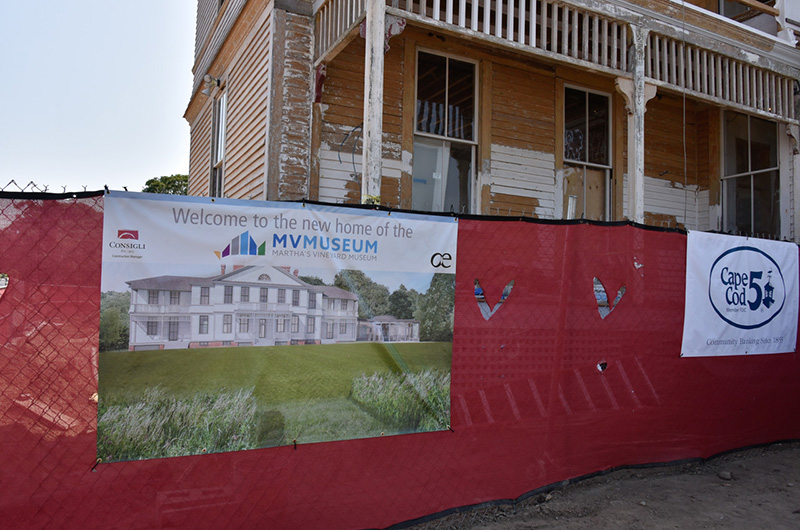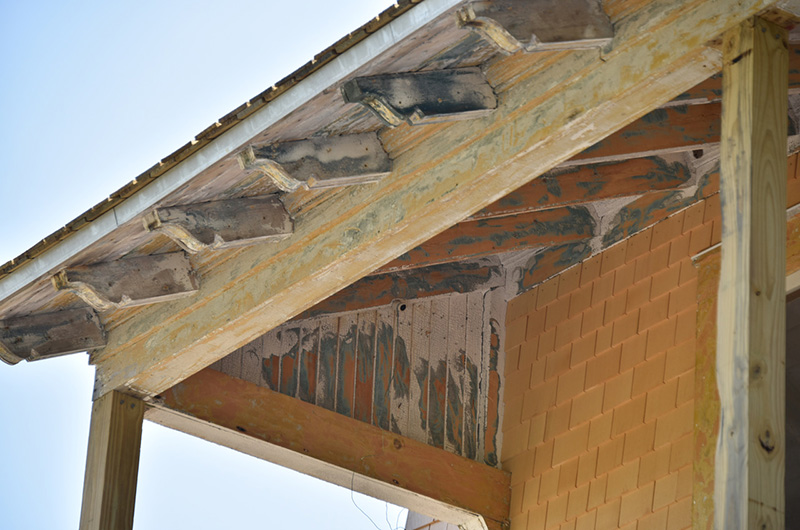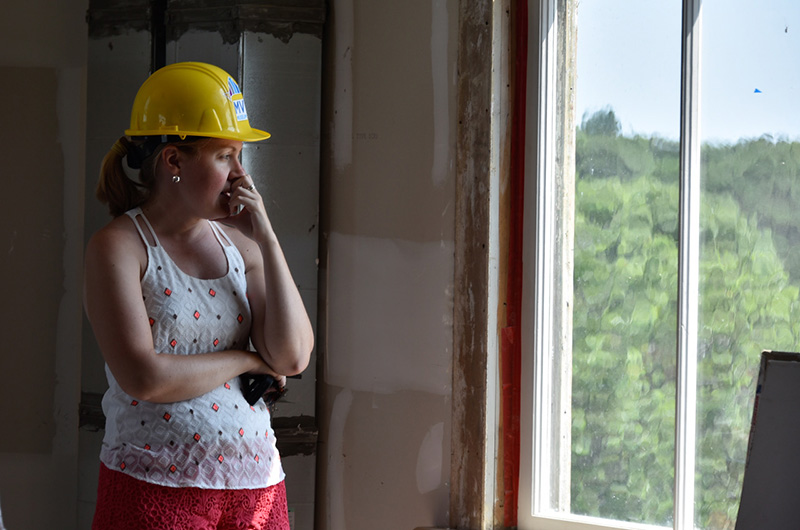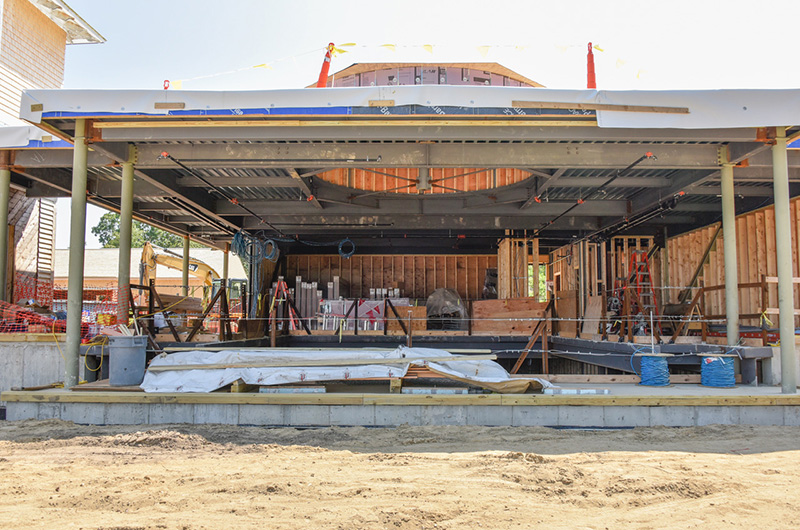Martha’s Vineyard Museum operations director Katy Fuller is often asked about the biggest object in the museum’s collection.
Is it the Fresnel lens that once lit the Gay Head Light? No.
The old Edgartown catboat vanity? Wrong again.
“Actually,” she tells the brave and curious on a recent hard-hat tour, “you’re standing in it — the 1895 Marine Hospital.”
It’s not often that the largest object in a museum’s collection is the museum itself, but that became the museum’s dream when it bought the 19th-century Vineyard Haven property in 2011. Since then, the museum has undertaken a years-long, $31 million project to retrofit the historic, 10,000-square-foot wood structure overlooking Lagoon Pond from a 29-room hospital for ailing sailors into a state-of-the-art museum facility.
Construction began last October and barring setbacks, is set to finish this September.
Ms. Fuller has been leading hard-hat tours for members of the public for some weeks now, showing generous donors and scurrying schoolchildren the bones of the museum’s future home. “There’s huge interest, which is very exciting,” she said.
She estimates that she has already shown 500 people around the site, and that doesn’t include the 500-odd more who walked through on their own at the Evening of Discovery fundraiser last Saturday.
“You get to see how we’re taking an 1895 building and trying to adapt it for modern uses,” Ms. Fuller said. She described the challenge of balancing preservation with adaptation. “The biggest issue has been with light,” Ms. Fuller said. “For the most part, museum collections and historic objects don’t like light. It deteriorates their quality. But restoring this building, we have these beautiful, huge windows everywhere.”
The museum plans to preserve the windows, keeping the original 1895 glass in many places, along with the building’s overall footprint. Galleries will have blinds, while rooms like the library on the second floor will have an exposed, sunlit feel. The museum has chosen to adapt to its historic space, rather than sacrifice its original beauty, which includes high, elegant ceilings. “It’s not a tear-down rebuild,” Ms. Fuller said. “It’s an add-on to a historic restoration project.”
The biggest add-on Ms. Fuller shows visitors on her tour is the annex set to house the original lens from the Gay Head Light. The top floor will have large glass panels that give an unobstructed view out to the Lagoon, and an exhibit on the history of lighthouses called Flashes of Brilliance. The bottom floor
will house the lighthouse base and mechanisms, along with a surrounding exhibit on shipwrecks. The irony of a shipwreck exhibit below the lighthouse wasn’t lost on Ms. Fuller. “The idea is that up here on the top floor, it is light and airy, and then downstairs, without the windows, is dark stormy shipwrecks,” she said.
Tour-goers now have the unique opportunity to see how that base will have to come together before the room’s glass panels go in — some of its parts are
either too heavy, or too large to put in the elevator.
“When you start to think about it,” Ms. Fuller said, speaking of the enormity of the project, “that’s when it gets scary.”
The tour comes with constant reminders that walls have wet paint and the cacophony of jackhammers, sanders and chainsaws in the background. There is major work left to do, Ms. Fuller acknowledged later in a text message.
“We need to excavate and waterproof the 1895 brick foundation. Obviously almost all the painting is yet to be done. Floors need to be refinished. Electrical fixtures need installation. We need to finish plumbing, and trim,” she wrote.
But she and the contractors at Consigli remain confident that it will get done on time — notwithstanding the obvious interruptions during hard hat tours.
“They’re like, we’re trying to get your project done, and we’re like, yooo, we’re still trying to raise money,” Ms. Fuller said.
Leroy Blood, a worker with Consigli, has been involved since 2011. “It’s sort of like my friend now,” he said.
Ms. Fuller, a 10-year veteran of the museum, feels similarly. “Sometimes its emotional to see the progress because I feel like it’s a third of my life that’s now being realized here,” she said. To honor the project, museum curators plan for the first rotating exhibit to showcase the art people have done of the building during the construction process.
Beyond the walls of the museum, Ms. Fuller has a vision for how she wants Islanders to use the space. “When it’s done, we want people to just be able to throw a football on the lawn, or bring a picnic out, come to the cafe, get a cup of coffee, and see the exhibits. We want it to be the Island’s museum.”
Until then, it’s the Island’s construction site. And with a hard-hat tour, it’s open for exploration, too.
To arrange a hard-hat tour, call Katy Fuller at 508-627-4441, ext. 123.













Comments (1)
Comments
Comment policy »